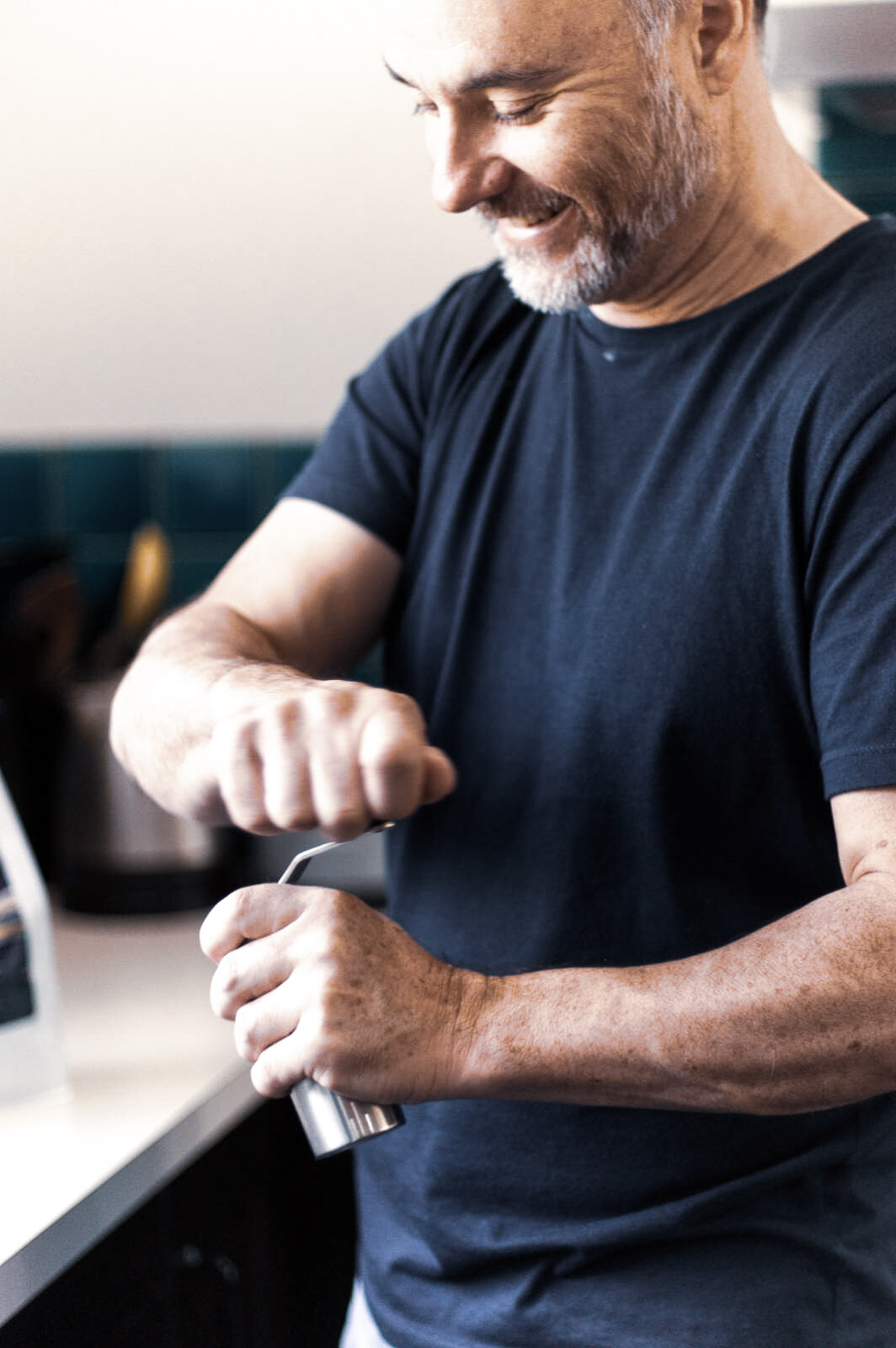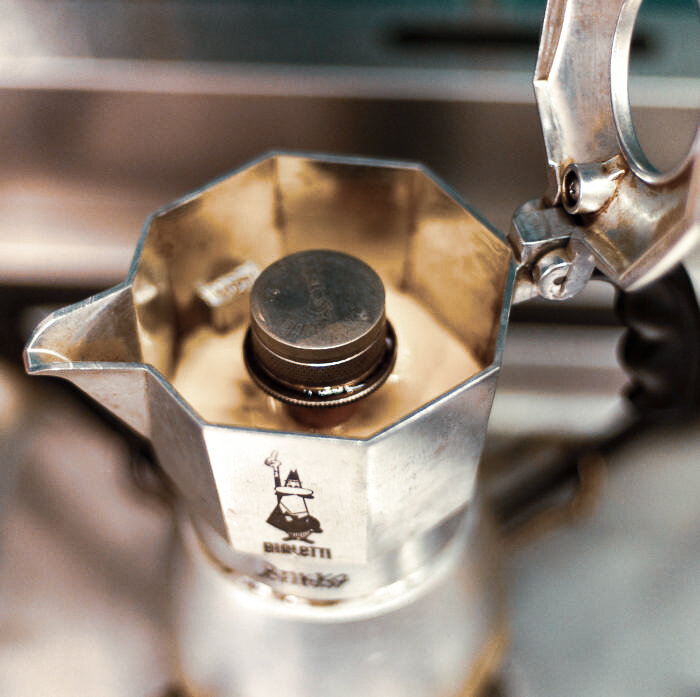Brewing Guide: Stove Top
Pete finding the perfect grind
The little stovetop espresso maker (or moka pot) is a classic of every Nonna everywhere. They’re the perfect tool for delivering a great, full-bodied, rich coffee at home without taking up the whole bench in the kitchen. To learn more about it, we paid a visit to Pete, our resident expert. He’s been using his little Bialetti for years and we hoped he’d share his morning ritual with us so we could pass some tips on.
Getting going:
Fill the base of the pot with hot water – less time on the stove stops the grinds from developing bitterness, but make sure not to fill past the valve! Now place the coffee basket in and fill with your fresh grinds. Fill it all the way to the top but don’t pack it down, you want the grinds to have some space. Screw the top on tight and pop it on the stove.
The grind:
Grinding your coffee fresh as you use it is probably the most important step in any coffee brewing, stovetop included. It can’t be overstated and if you are looking to buy some equipment to make coffee at home, always start with the grinder. That said, Pete uses a lovely little Japanese Porlex hand mill. A few seconds of elbow grease and he’s got enough fresh, fluffy grinds to fill the small Bialetti pot we’ll be using. As for fineness, he recommends a few steps coarser than espresso, but a little trial and error will find you your sweet spot with your own gear.
fresh fluffy grinds
The pour:
Keep the lid open and watch, pretty soon a rich golden liquid will start to pour out of the centre and fill up the chamber. As soon as it starts to pale in colour switch off the heat. At this stage you can use a cold, damp cloth to wipe the base of the pot to instantly cool it, stopping the brewing process or as Pete says, just pour it straight into your cup. Either way, you’ll want to avoid the end of the process where it starts hissing steam out, this will only impart a harsh bitterness to the drink.
Cleaning:
Once you’re all done, you simply need to take the pot apart and give it all a good rinse and let it dry. Don’t use detergents and if you’re brewing with a Bialetti like Pete, they’re aluminium so can really do with retaining some of the oils on the surface so as to not add a metallic taste to your coffee. He recommends using it daily in this case as the seasoning won’t get a stale taste to it. If the pot goes out of action for a while, you might want to re-season it a couple of times before bringing it back into the fold.
Honestly, they’re a pretty simple way of making a cracking coffee, as long as you follow some basic parameters. That’s probably why they’ve been around for so long.
Featured Brewing Blogs
All blogs
-
October 2023
1
- Oct 31, 2023 Wild Bourbon - the third edition of our Spirit Infusion range Oct 31, 2023
-
October 2022
1
- Oct 8, 2022 Making people’s holidays better. With coffee. Oct 8, 2022
-
July 2020
1
- Jul 15, 2020 Orange & cardamom scrolls Jul 15, 2020
-
June 2019
1
- Jun 15, 2019 Brewing Guide: Stove Top Jun 15, 2019
-
May 2019
1
- May 11, 2019 Brewing Guide: Plunger May 11, 2019






The little stovetop espresso maker (or moka pot) is a classic of every Nonna everywhere. They’re the perfect tool for delivering a great, full-bodied, rich coffee at home without taking up the whole bench in the kitchen. To learn more about it, we paid a visit to Pete, our resident expert. He’s been using his little Bialetti for years and we hoped he’d share his morning ritual with us so we could pass some tips on.